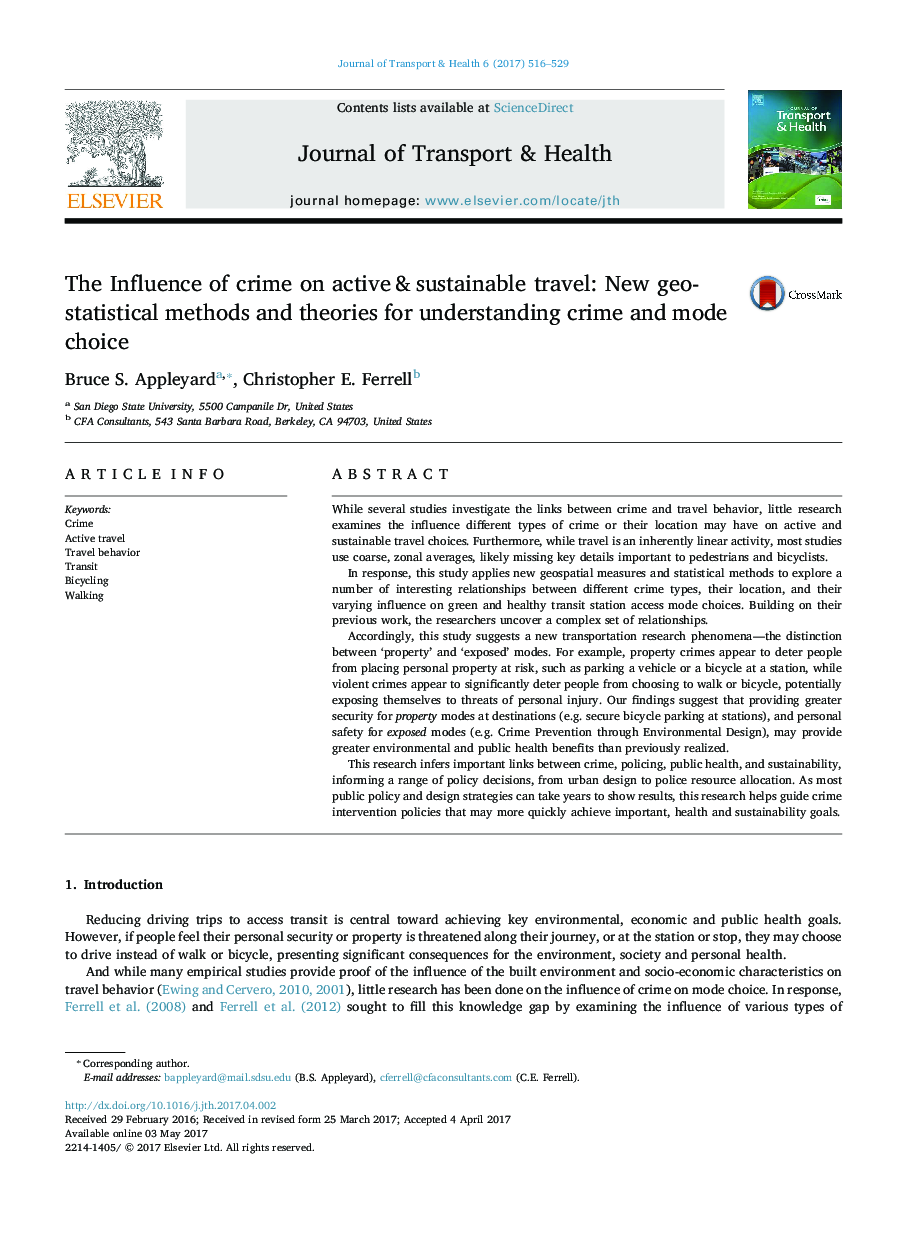| کد مقاله | کد نشریه | سال انتشار | مقاله انگلیسی | نسخه تمام متن |
|---|---|---|---|---|
| 5117687 | 1485455 | 2017 | 14 صفحه PDF | دانلود رایگان |
- Reveals the influence of different types of crime have on people's travel mode choices.
- Innovative use of new linear, geospatial measures to understand walking and bicycling behavior.
- Study includes a significant number of bicyclists to provide robust findings of bicycling mode choice.
- Articulates new transportation phenomena: property/non-property and exposed/enclosed travel modes.
- Presents a new theoretical framework of property/non-property and exposed/enclosed travel modes.
- Unique use of MNL predictive modeling techniques.
While several studies investigate the links between crime and travel behavior, little research examines the influence different types of crime or their location may have on active and sustainable travel choices. Furthermore, while travel is an inherently linear activity, most studies use coarse, zonal averages, likely missing key details important to pedestrians and bicyclists.In response, this study applies new geospatial measures and statistical methods to explore a number of interesting relationships between different crime types, their location, and their varying influence on green and healthy transit station access mode choices. Building on their previous work, the researchers uncover a complex set of relationships.Accordingly, this study suggests a new transportation research phenomena-the distinction between 'property' and 'exposed' modes. For example, property crimes appear to deter people from placing personal property at risk, such as parking a vehicle or a bicycle at a station, while violent crimes appear to significantly deter people from choosing to walk or bicycle, potentially exposing themselves to threats of personal injury. Our findings suggest that providing greater security for property modes at destinations (e.g. secure bicycle parking at stations), and personal safety for exposed modes (e.g. Crime Prevention through Environmental Design), may provide greater environmental and public health benefits than previously realized.This research infers important links between crime, policing, public health, and sustainability, informing a range of policy decisions, from urban design to police resource allocation. As most public policy and design strategies can take years to show results, this research helps guide crime intervention policies that may more quickly achieve important, health and sustainability goals.
Journal: Journal of Transport & Health - Volume 6, September 2017, Pages 516-529
